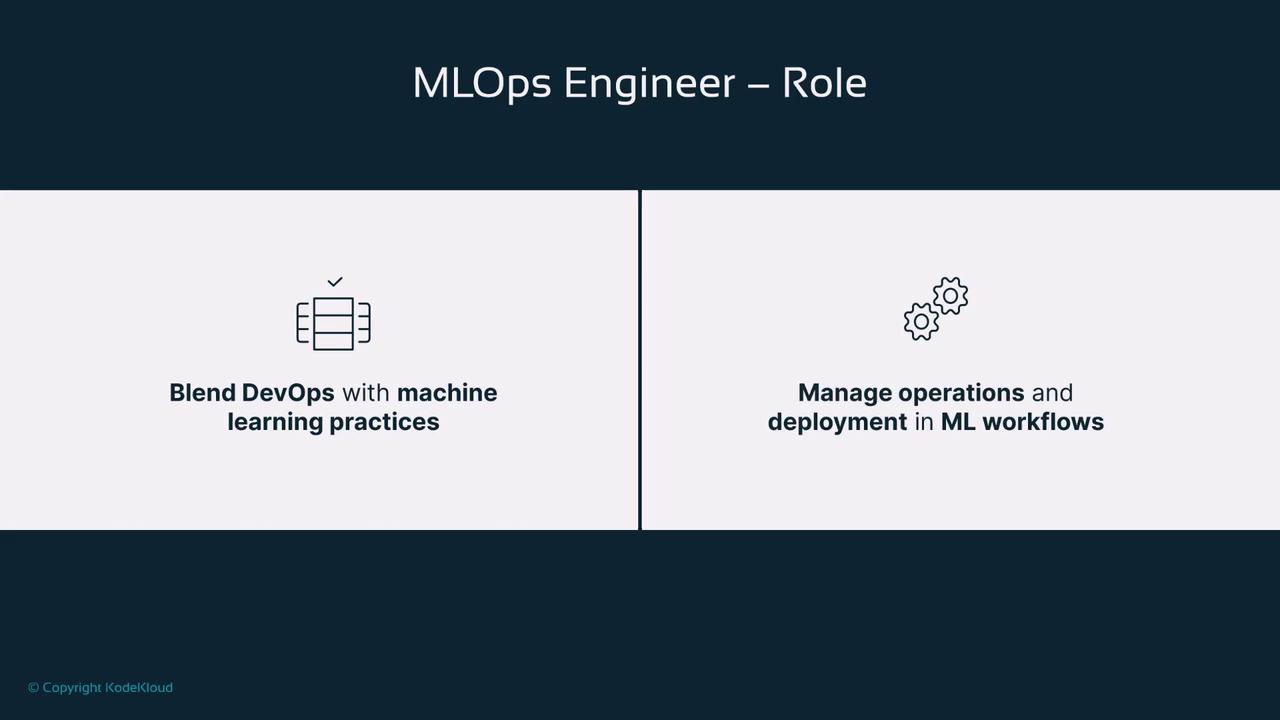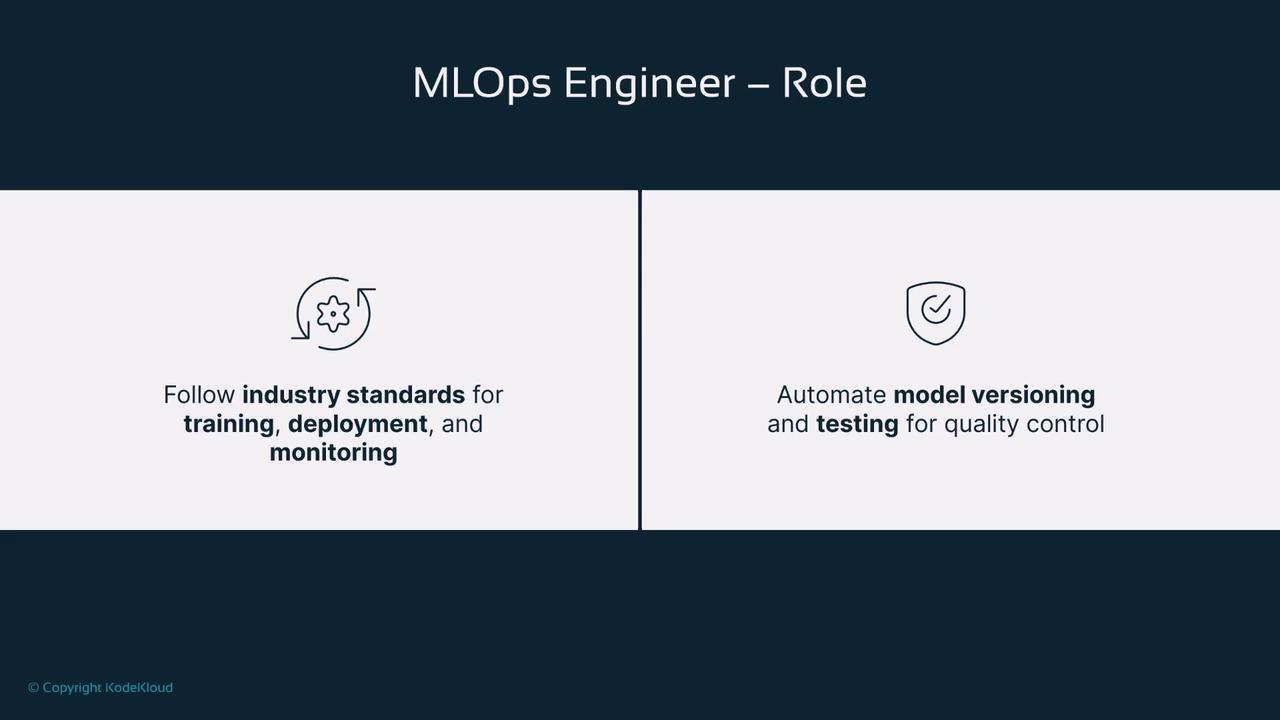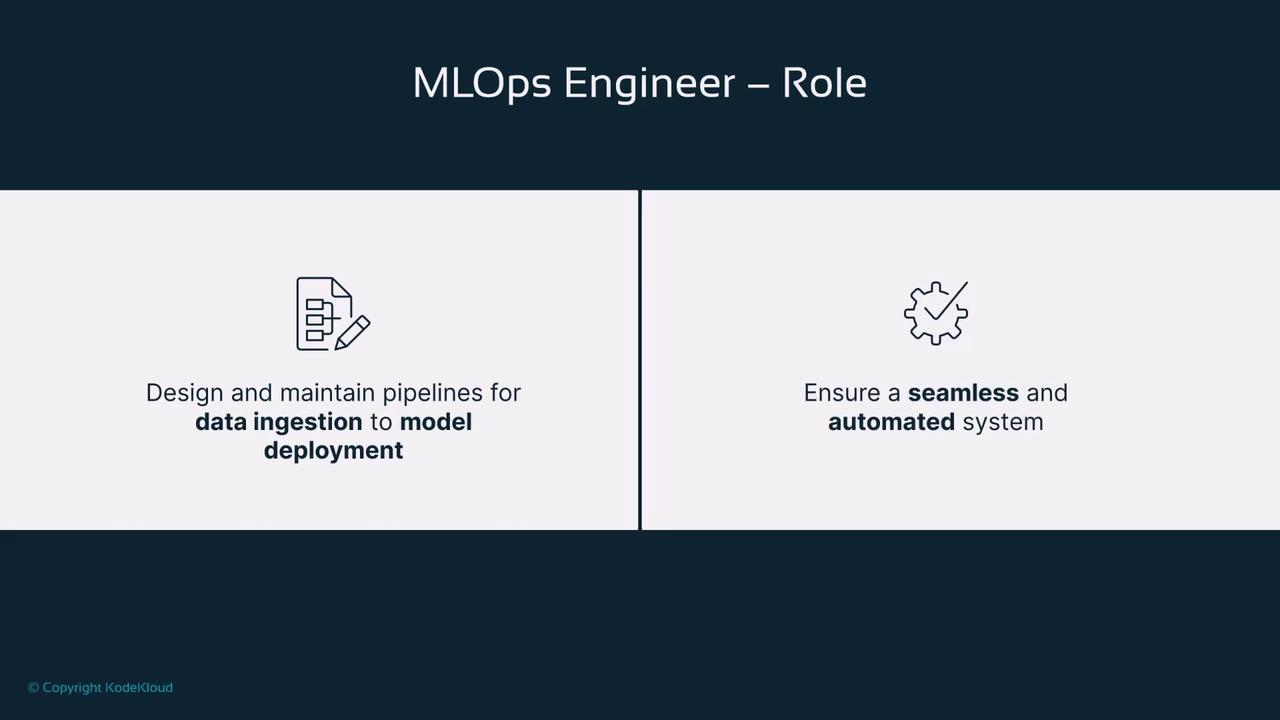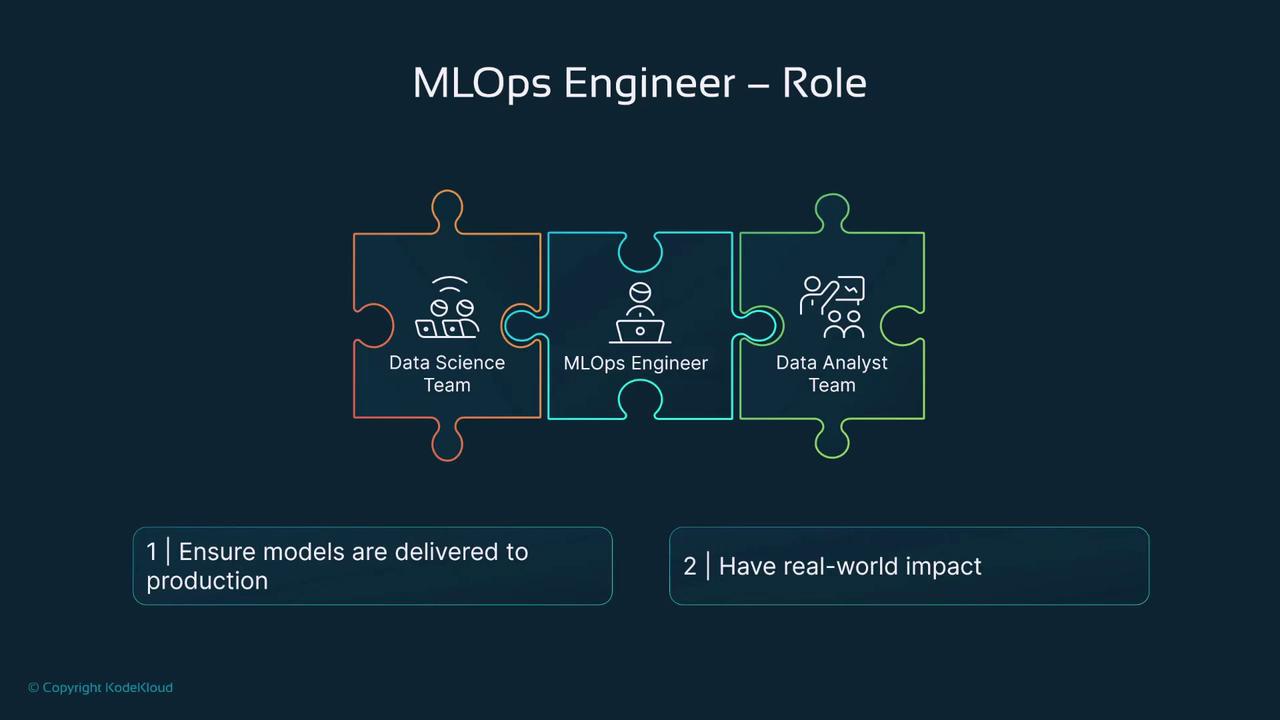Fundamentals of MLOps
Introduction to MLOps
Introducing MLOps Engineer
Welcome to our in-depth guide on the role and responsibilities of an MLOps Engineer. In this article, we explore what it takes to be an MLOps Engineer, the critical duties involved, and how this role bridges the gap between data science and production operations.

Understanding the MLOps Engineer Role
An MLOps Engineer is fundamentally a skilled DevOps Engineer who applies best practices from software engineering to the world of machine learning. This role is at the convergence of data science and operations, where managing operational processes and automated model deployment is key.
The MLOps Engineer is responsible for implementing industry standards throughout the machine learning workflow. This involves automating model versioning, testing, training, deployment, and monitoring to ensure that models are reproducible, scalable, and meet organizational requirements.

Furthermore, MLOps Engineers build and manage entire machine learning pipelines—from data ingestion to model deployment—creating seamless and automated processes that empower both data scientists and engineers to focus on innovation.


In essence, the MLOps Engineer acts as the crucial link that enables data science teams to deliver high-quality models into production, thereby maximizing their real-world impact.

Roles and Responsibilities
Streamlining the ML Lifecycle
MLOps Engineers optimize the entire machine learning lifecycle—from model training to deployment—by standardizing processes that might otherwise be slow or error-prone.
Enabling CI/CD
They harness Continuous Integration and Continuous Deployment (CI/CD) pipelines to automatically test, integrate, and deploy models. This approach is essential for rapid iteration while minimizing downtime.
Facilitating Team Collaboration
By establishing collaborative environments and effective tools, MLOps Engineers ensure smooth coordination among data scientists, engineers, and product teams. This includes robust systems for version control and change tracking to keep all stakeholders aligned.
Automating Training and Deployment
Automated retraining and deployment processes are critical. MLOps Engineers set up systems to retrain models automatically when new data becomes available, ensuring consistent and reliable deployments.
Automation Tip
Automating repetitive processes not only speeds up the model lifecycle but also minimizes human error, ensuring more stable and reliable outputs.
Monitoring Performance
After deployment, continuous monitoring is key. MLOps Engineers regularly check model performance and look out for issues like model drift, ensuring that the deployed models remain scalable and robust under varying loads.
Accelerating Time-to-Market
By refining the journey from model development to production, MLOps Engineers help organizations deploy solutions in a timely manner. Quick deployment is essential to address challenges before alternative solutions emerge in the market.
Ensuring Scalability and Robustness
These engineers also focus on scalability by deploying models on cloud-based infrastructure that can automatically adjust to increasing data volumes and user demands.

Wrapping Up
Some responsibilities of an MLOps Engineer closely mirror those of a DevOps Engineer, as both roles focus on building and maintaining robust pipelines. However, the unique intersection with machine learning distinguishes the MLOps role.
In our next article, we will explore the critical differences between an MLOps Engineer and a traditional DevOps Engineer, and how each contributes to modern software and data science projects.
Thank you for reading this article. For more information, check out our related guides and resources on machine learning and deployment best practices.
Watch Video
Watch video content